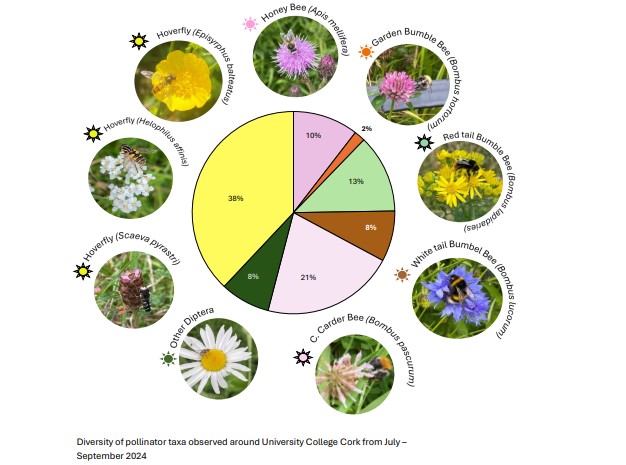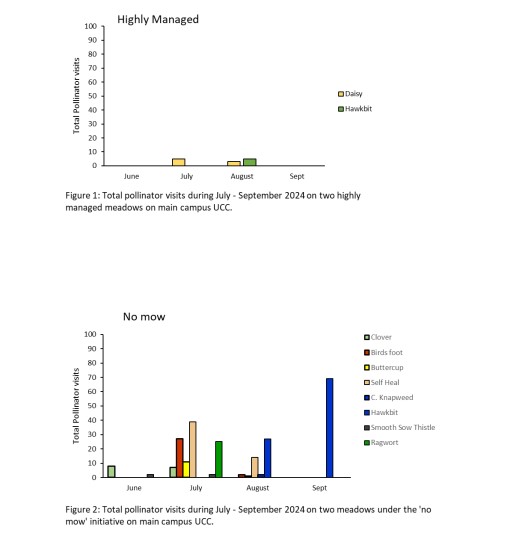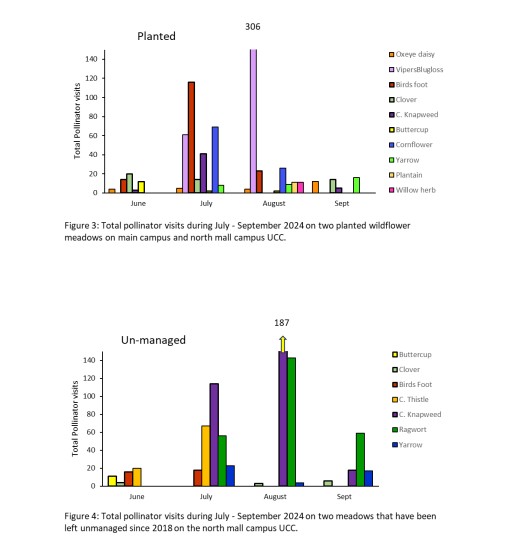News
Living Lab Project BLÁTH shares findings.

BLÁTH aims to investigate the effects of the ‘no mow’ initiative on plant-pollinator interactions across four different types of management in the UCC campuses: highly managed (HM), fig.1, no-mow (NM), fig. 2, planted meadow (PM), fig. 3, and unmanaged meadow (UM), fig. 4. Sites were selected from two campuses of University College Cork (UCC), specifically the main campus and the North mall campus. Each site featured continuous vegetation with various plant species, ranging from three to over fifteen species. Different management approaches resulted in varying numbers of pollinator visits. The data demonstrates that highly managed meadows attract very few pollinators, while both the ‘no mow’, planted and unmanaged meadows show a significantly higher amount of pollinator activity.
Preliminary findings – project summary, figures 1 – 4
Among the three active pollinator sites studied, (NM, PL, UM) four common plant species were identified: clover, buttercup, common knapweed, and birds-foot trefoil. Clover and common knapweed provide resources throughout the summer, from June to September, across all meadows, ensuring continuous support for pollinators, with peaks observed in the (UM) during July and August.

The highly managed meadow recorded the fewest total pollinator visits to the common daisy and hawkbit plant species, with only 13 observations noted during July and August. The no-mow area followed with 236 visits, while the unmanaged and planted meadows totalled 766 and 808 visits respectively, these observations were taken during the summer season June – September. July and August were the busiest months for all sites, with the no-mow area showing an increase in pollination numbers during September. The no-mow management approach highlighted the significant impact of the hawkbit plant from the Asteraceae family on pollinator counts later in the season early September.

Pollinator activity, fig. 5
Hoverflies displayed consistent activity throughout the year. In late summer (August), C. carder was the dominant species, while Redtail Bees and Honey Bees were most active in July. The highest level of pollinator activity occurred in August, reaching a total of 308 counts, with C. carder being the dominant species during that time.
